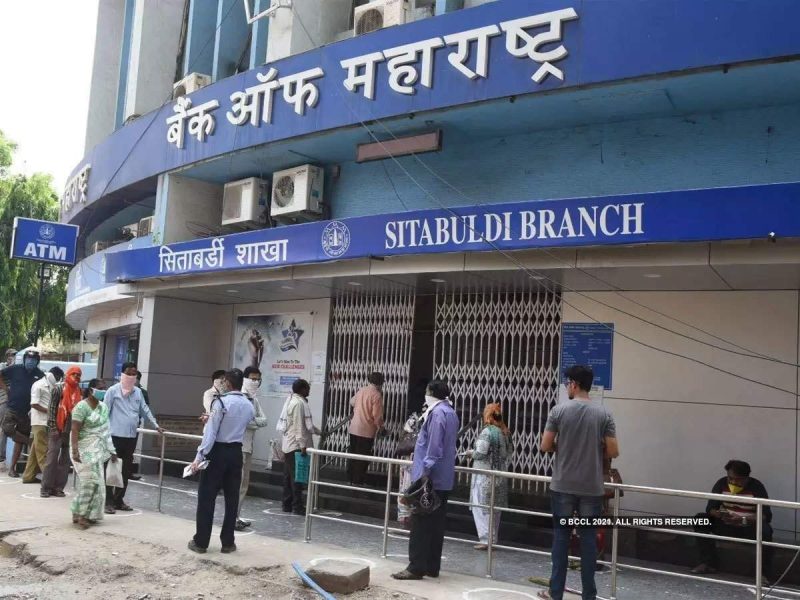
Bank of Maharashtra makes a windfall, but staff feel the pinch

One of the biggest nationalized banks in India – Bank of Maharashtra – is struggling with a shortage of clerical employees. A few branches of the bank have reported ‘zero clerical staff’, allege the All India Bank of Maharashtra Employees Federation (AIBMEF).
The bank, which has the largest presence in Maharashtra, has shown a substantial increase in overall business and profits over the last four years, but no new employee (in class 4/clerical category) was hired during the period. Instead, opening of more number of branches has only added to the workload, say the bank employees demanding fresh recruitment.
The Bank of Maharashtra has seen its profits double per employee (overall profit divided by the number of employees) while the number of clerks per branch has reduced to almost half of what it was 10 years back, shows data.
Of the 1,949 bank branches in the country, about 55 do not have even a single clerk as on April 31, 2021. Further, over one-third branches (729 of them) are operating with just one clerk per branch. A total of 59 branches have five clerks each.
About 50% branches do not have the right clerk-workload balance, say the protesting employees.
The increased work pressure is affecting employees’ work-life balance. One of the agitating employees told The Federal, “It is so difficult to get even a day’s leave. At times we do not get leave to attend to family health emergencies. If only the management had recruited fresh employees…”
Less clerks, increased workload
Also read: New pension, debit/credit card rules: Big changes from Oct 1
“Bank of Maharashtra could double its business because of the dedication of its employees. We all have worked as a team even during the pandemic, but the bank is not recruiting people and ease our workload,” said Dhananjay Kulkarni, secretary of the All India Bank of Maharashtra Employees Federation, adding that he fails to understand whom the profit is meant for? “Is it for the people or at the cost of people,” quipped Kulkarni.
He further said that in all these years, the bank has refrained from recruiting employees just to increase profits. “Even the temporary workers are not being absorbed despite declaring profits for over eight consecutive quarters,” Kulkarni said.
Better performance with lesser human resource
The Per Employee Business (PEB) is another important metric that shows how the bank has performed over the certain period of time. PEB is calculated by dividing total business by the number of employees working in the bank.
Also read: End of competitive corporate tax era will create level playing field
Devidas Tuljapurkar, former director of Bank of Maharashtra, said, “In 2016, Bank of Maharashtra was suffering losses and there was an urgent need to get the bank out of the financial mess. I was one of the directors then. To increase profits, the management focused on retail lending/deposits instead of bulk business. It simply means that we increased individual savings accounts rather than adding big corporate accounts. As a result, workload increased on counters where one needs clerks and not officers.”
Tuljapurkar said that in 2016, the Reserve Bank of India put the bank under ‘Prompt Corrective Action Measures’. It means that all the transactions of the bank are closely monitored by the central bank until it comes back out of the potential crisis-like situation. “Bank of Maharashtra has now come out of those restrictions as is consistently registering profits. All of this is an outcome of sustained efforts of the bank employees,” says Tuljapurkar.
Opening of accounts under Pradhan Mantri Jan Dhan Yojana and a lot of other government schemes, channelized via banks, only added to the burden of the employees. Under the Pradhan Mantri Jan Dhan Yojana, launched in 2014, anyone with valid documents was entitled to open zero balance account. As of today, over 40 crore Jan Dhan accounts have been opened across the country. Further, Aadhar Card linking and issuance of Rupay card started in the next two years. Additionally, a large number of savings accounts, loan accounts were opened to avail of various government schemes like Mudra Yojana, Swanidhi Yojana, PM Kisan, etc.
“This is how the load piled up on the banks. Add demonetization and the pandemic to this and you will get an idea of the workload on bank employees,” said Tuljapurkar.
The Federal tried to reach out to Bank of Maharashtra officials, but the management did not respond.


